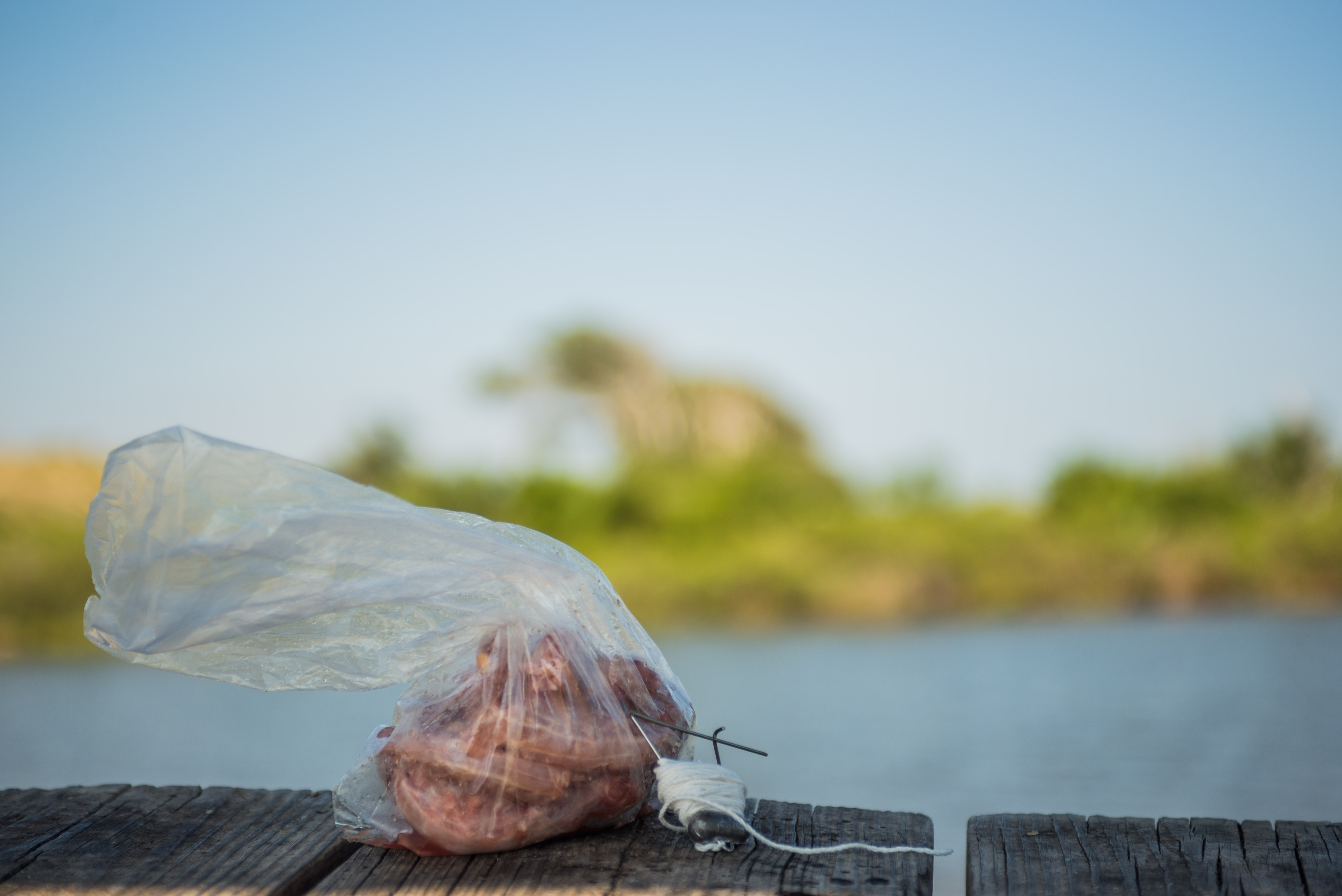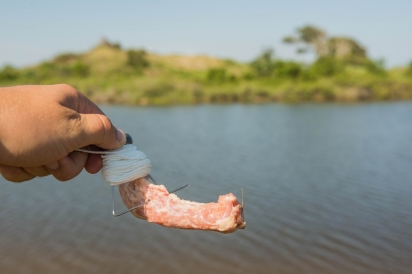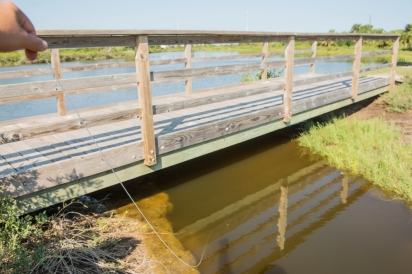Let’s go crabbing
“Chicken-necking”—catching crabs by dangling a chicken neck on a string in the water—marks many a child’s initiation into saltwater fishing. When my children were young, they’d clamor for me to wheel in to the local grocery for a bag of chicken necks as soon as we arrived at the coast. Often, before I’d finished unloading my truck they would have tied a string around a chicken neck, dangled it off the dock and poised the dip net at the ready. Team chicken-necking takes patience and cooperation, as one person has to slowly maneuver the crab that’s taken hold of the chicken neck, as the other person scoops up the now-angry little fellow with the crab net.
I still have a penchant for chicken-necking, especially when youngsters are around. Their excitement and joyous laughter burnishes the memories of long-past sun-glazed summers with my tow-headed son and daughter, all of us staring intently into the water as one child dangles a chicken neck and the other handles the net.
Today, though, I mostly rely on crab traps so I can fish while the baited trap does the work. When the bite ebbs, I’ll paddle a pirogue around the marsh to gather up the crab traps, releasing the females as I go, in hopes that our bays hold blue crabs for many generations to come.
As fragile—and delicious—as these crustaceans are, I know that you, like me, want to give blue crabs a fighting chance by seeing that the females survive. So how do you tell the difference? Look at the crab’s abdomen: A jimmy has a center plate that’s long and narrow, resembling the Washington monument in shape, and a sally or sook has a center plate that’s short and squat, resembling the Capitol dome.
Recreational crabbers need a valid fishing license with a saltwater endorsement, and may take an unlimited number of crabs that measure at least five inches across the widest part of the body. For commercial crabbers, it’s a limited-entry fishery—meaning that Texas Parks and Wildlife regulates the number of commercial licenses to protect the resource from over-harvesting. TPWD also requires that crab traps have escape rings and biodegradable panels to prevent what’s called “derelict fishing” by traps that have been abandoned or lost. In addition, the year-round commercial season closes for three weeks each February for the annual Crab-Trap Cleanup, where volunteers gather abandoned traps to prevent them from killing crabs, fish and other aquatic life and from becoming navigational hazards.







